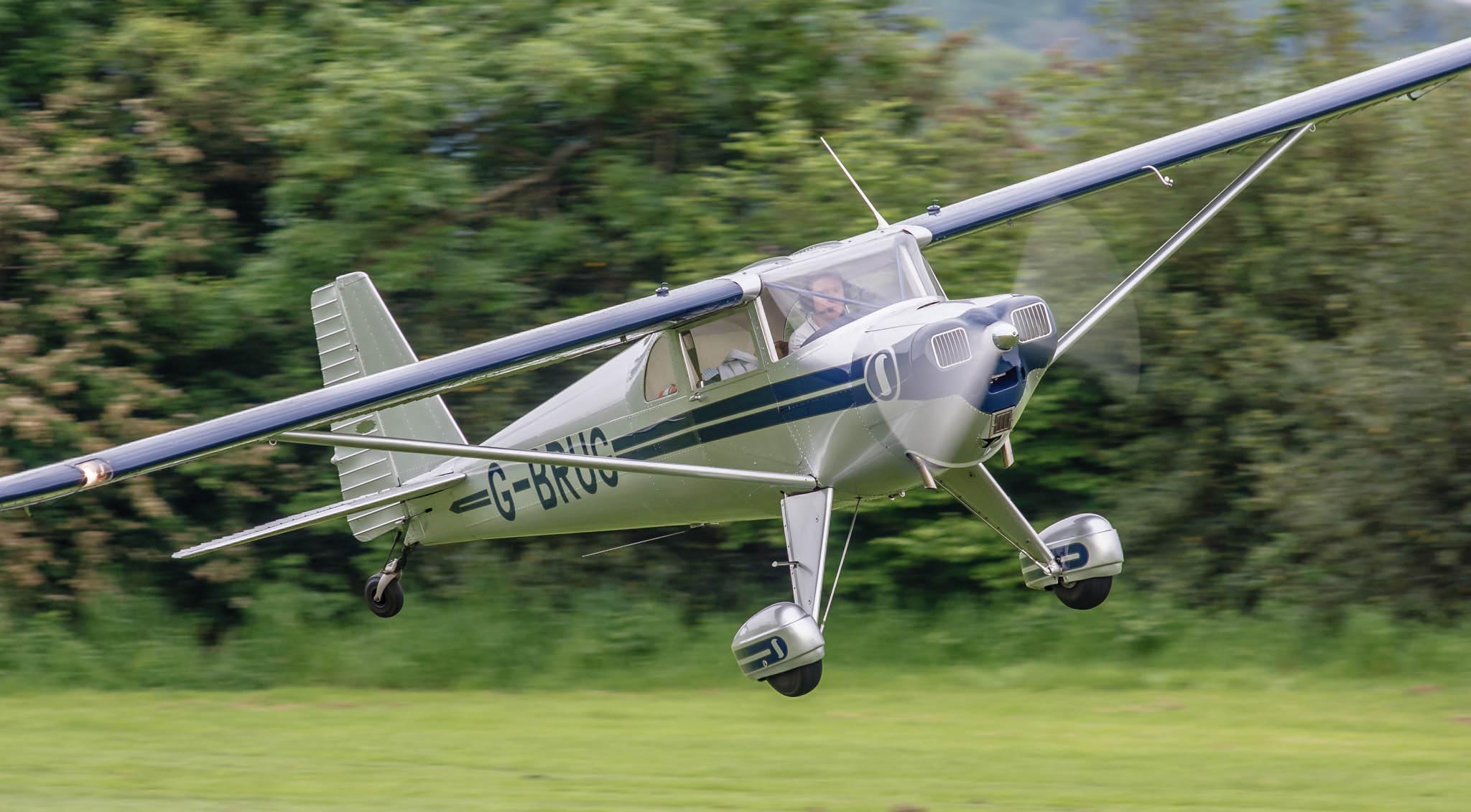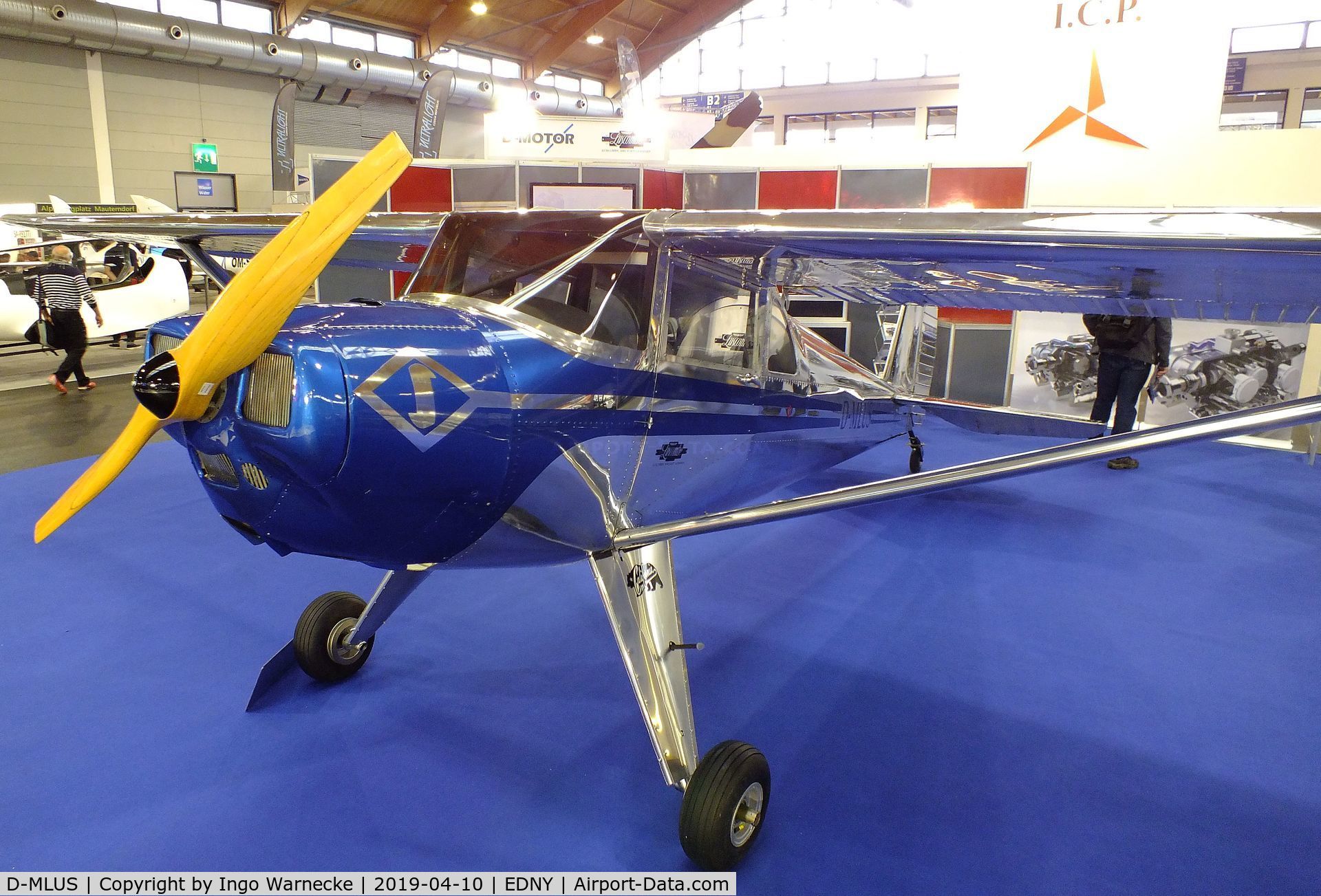Luscombe Aircraft - The Luscombe series of light monoplanes were introduced by the Luscombe Airplane Corp in 1937. The Model 8, also known as the Luscombe 50, powered by a 37 kW (50 hp) Continental engine, was approved in August 1938. The production rate was rapid. increased to meet demand, with most of the aircraft being delivered to flight schools across the US. In 1939, with the introduction of the new 48 kW (65 hp) Continental engine, the new 8-A model was launched with another 8-A2 variant, later with additional equipment and a luxurious interior. 8-B was a training variant. In 1941, a 56 kW (75 hp) Continental engine was installed and the aircraft was known as the Model 8-C in standard form or the 8-D deluxe version. However, after around 1,200 examples were produced, production ceased in 1942 when the company was asked to shift its production capacity to military orders.
After the war, Leopold Klotz, who had taken over the company from Don Luscombe, built a new factory near Dallas, Texas and designed a new metal wing for the Model 8 series. All Silvaires were built with this new wing, the 1946 model becoming the 8-E with the 63 engine kw (85 hp) and the 1948 model became the 8-F with a 67 kw (90 hp) engine. However, in 1949 financial difficulties forced the Luscombe Co, as it was then called, to close.
Luscombe Aircraft

The monocoque hull was of metal construction, constructed of oval 17ST durals covered with sheet metal. The wing struts and undercarriage were attached to duralumin fittings and the engine mount was of welded tubular steel, the engine was mounted on rubber mounts. The wing frame consisted of extruded duralumin spars, the leading edges covered with sheet metal, with the finished airframe covered with fabric. Models from 8-D up had a 45 liter fuel tank in each wing root.
Luscombe Airplane Corp. Phantom (nc1025) 1955 4
Temco Engineering then took over production, but only a few Silvairs were built and the new line was closed again in 1950. In 1955, the Colorado group began production and built several aircraft until the line closed again in 1960. Model 8-A Silvaire was imported to Australia in 1981 and after restoration became VH-LUS (c/n 2845). More specimens were imported and more than 15 were registered in this region. Three are known to be in New Zealand, two are airworthy (N1737K - c/n 4484 and N45856 - c/n 2883), and another machine is awaiting restoration at Pokena.
Over the years it was reported that the Silvaire was back in production and finally in 2006 Renaissance Aircraft announced at Flabob Airport in California that the Luscombe 8 was back in production under the new Light Sport Aircraft (LSA) regulations and tailwheel model and variants tricycle landing gear, powered by the Continental O-200 engine, but also available with the Lycoming O-320 series Donald A. Luscombe founded the Luscombe Aircraft Company in 1933 in Kansas City, Missouri. Luscombe had already made a name for himself as an aircraft designer with the Monocoupe series of light aircraft, but he felt that the tube and fabric construction method was too expensive and too inefficient. He planned to create a light aircraft that had a monocoque metal structure.
The first aircraft of the new company was the Luscombe Model 1, known as the Luscombe Phantom. It was a high-wing, two-seater monoplane of all-metal construction (except for the fabric covering of the wing). The Phantom was difficult to land and was never financially successful.
In the winter of 1934/35, Luscombe Aircraft moved to Toronto, New Jersey and was incorporated as the Luscombe Aircraft Developmt Corporation. The Luscombe School of Aeronautics opened shortly afterwards. Apprentices from the school worked at the Luscombe plant and the school helped support the airline for many years.
Chautauqua County Jamestown Airport Lands Aircraft Manufacturer
In 1936 the company designed and began flying a simplified version of the Phantom known as the Luscombe 90 or Model 4.
Luscombe Aircraft Corporation was reincorporated as a New Jersey company in 1937 and a new design began. The Luscombe 50 (Model 8) became the company's best-known product. The Model 8 type certificate is A-694 and is currently owned by the Good Earthkeeping Organization, Inc. from Corona, California (USA).
In 1946, Luscombe also introduced the four-seat Model 11, designed to specifications produced by the Flying Farmers of America.

TEMCO of Dallas, Texas decided to cease production, Luscombe's tooling, parts and other assets were purchased by Otis Massey (not the mayor of Houston, Otis Massey). Massey had been a dealer in Luscombe since the 1930s. He debuted his new job in Fort Collins, Colorado as the Silvaire Uranium and Aircraft Company. From 1956 to 1961, this company produced 80 aircraft. The make and model throughout the 1980s was the Silvaire 8-F, with "Luscombe" appearing in quotes in company literature. The N9900C prototype aircraft, serial number S-1, was built in 1956. N9900C first flew on September 10, 1956, and according to the FAA Aircraft Database, was sold the following spring to Boggs Flying Brokers in California. . Six aircraft (serial numbers S-2 to S7) were produced over the next twelve months. Serial numbers S-2 and S-3 were shipped by C-46 aircraft to Buenos Aires, Argentina. The first aircraft, the S-1, was built from spare or Material Review Board spare parts left over from previous TEMCO production. TEMCO is used to complete approximately four aircraft (Swick, 2005). Members HAVE MORE TO EARN More Save - get MORE from piloting - CLICK HERE
Aircraft Photo Of C Fhho
After obtaining a private pilot certificate in the Piper Cub, some pilots moved on to what they called "high performance" aircraft, which in the 1940s and even the early 1950s were the Luscombe 8 series aircraft.
Instead of 60 miles per hour, riders chased 85 angry horses at 100 miles per hour. Early Luscombe models are classified as light sport aircraft, including the Luscombe 8 to 8D. It is a two- to four-seater aircraft with tail wheels (Luscombe 11n). Early in its life it had an undeserved reputation as a "squirrel on the ground" caused by pilots using the heel brakes after landing. One owner said the only reason brakes are needed on a Luscombe is for parking.
Lars Persson of Fort Pierce, Florida recently sold his Luscombe 8E after 50 years of ownership. It reached 100 mph during the cruise, but did not use the maximum power of its 85 horsepower engine. It burns only 4.2 to 4.8 liters per hour. Maintenance is economical, meaning he and his friends can get an annual checkup for $200. According to him, a Continental O-200 engine with a power of 100 hp would be ideal for the plane. Persson's 85hp engine never gave him any trouble, except for the day he successfully landed at the airport after getting ice in the carburettor, despite having opted for full carburettor warm-up. Visibility over the nose is great, but its slope makes new pilots think the climb is straight and even. Persson's 8E has two fuel tanks in the wings, while some earlier Luscombes had one centrally located tank. Lest you think the Luscombe is just a two-seater, Merrill Bumbaugh of Fort Pierce, Fla., has a Luscombe 11A that carries four at 130 mph and burns 10 gallons per hour. The Model 11 was designed to Flying Farmers of America specifications and could carry six milk cans in the back if the rear seat was removed. 90 were built and 28 are still registered. His plane is powered by a 165 horsepower Continental O-540 engine that was later upgraded to eventually power the Navion aircraft. Then it became a 225 horsepower engine.
Alton K. Marsh is a former editor-in-chief of the Pilot and is now a freelance journalist specializing in aviation issues. Of all the airplanes that have received rave reviews over the years, one model stands out above most others in handling quality. Time and time again I have heard from pilots of a certain maturity and Luscombe is the most frequently mentioned brand.
Luscombe 8a > National Museum Of The United States Air Force™ > Display
Having flown many model aircraft, it would be hard to say which ones I think have done the rest. What does it mean?
Handling can be quite individual. Some people like a docile and forgiving airplane. Honestly, that's probably most of us. It's annoying (and maybe even scary) to be forced to stay on top of the plane all the time. Other pilots prefer a quick response and a light touch.
The Luscombe offers a great combination of light output with excellent response that will make most of us feel comfortable. That's magic!

Originally from mid-century Kansas City, Missouri, Luscombe moved to Trenton, New Jersey. It was later built in Dallas, Texas, then Fort Collins, Colorado, before moving to Riverside, California under John Dearden, who obtained LSA approval for the Luscombe Silvaire Model 8.
Aircraft Photo Of N2666k
Now the Luscombe Aircraft Corporation (LAC) has gone cross country again, this time to Jamestown, New York.
Luscombe 8d, luscombe aircraft company, debbie luscombe, luscombe aircraft for sale, roger luscombe, richard luscombe, luscombe aircraft parts, luscombe restoration, steve luscombe, susan luscombe, luscombe parts, luscombe
0 Comments